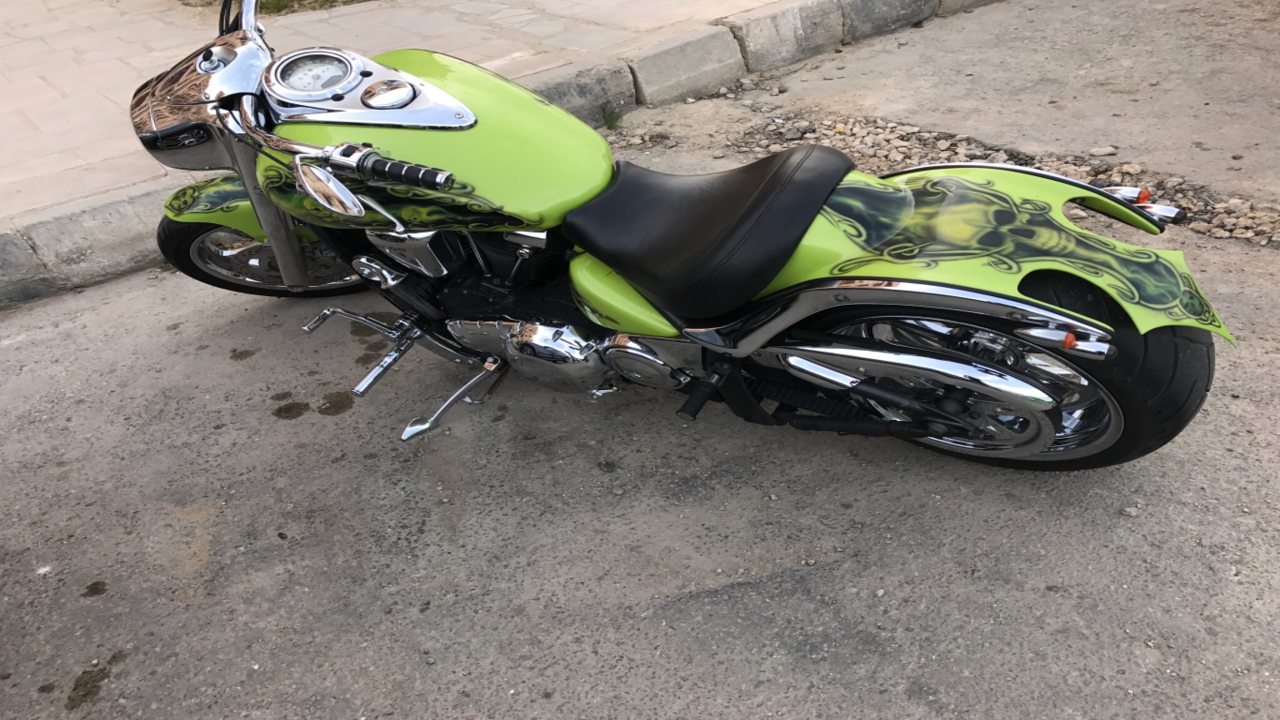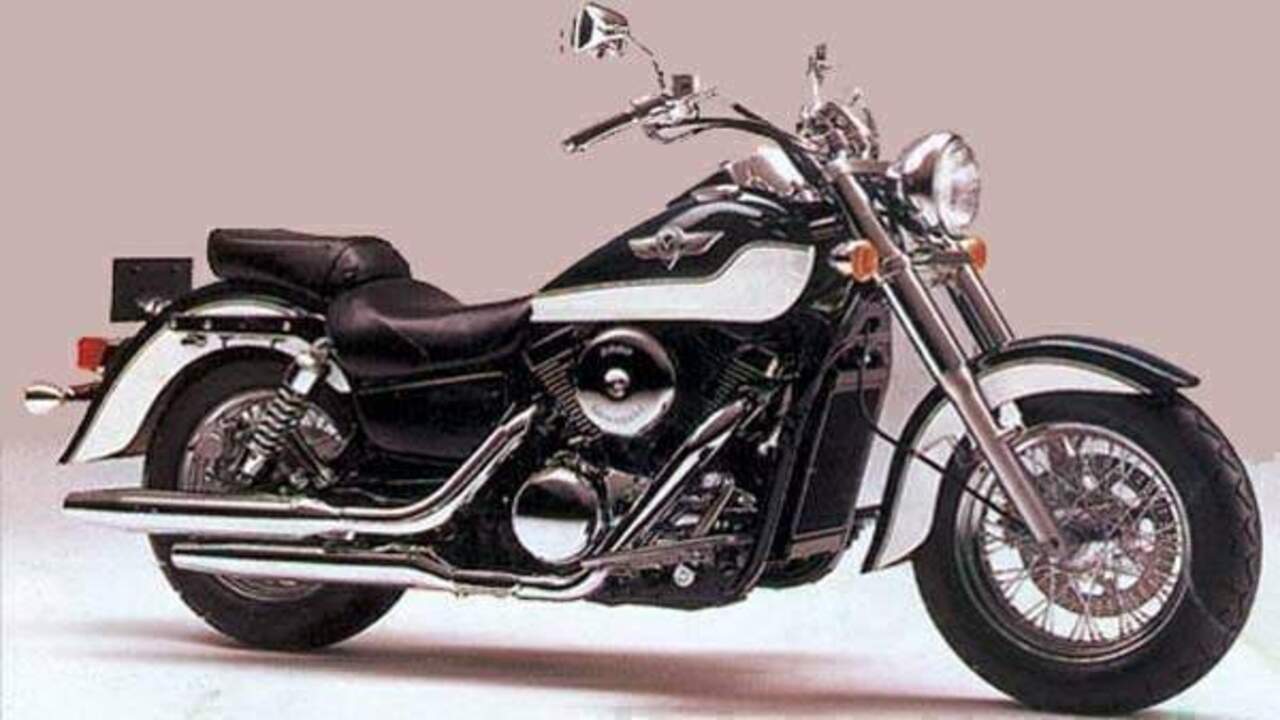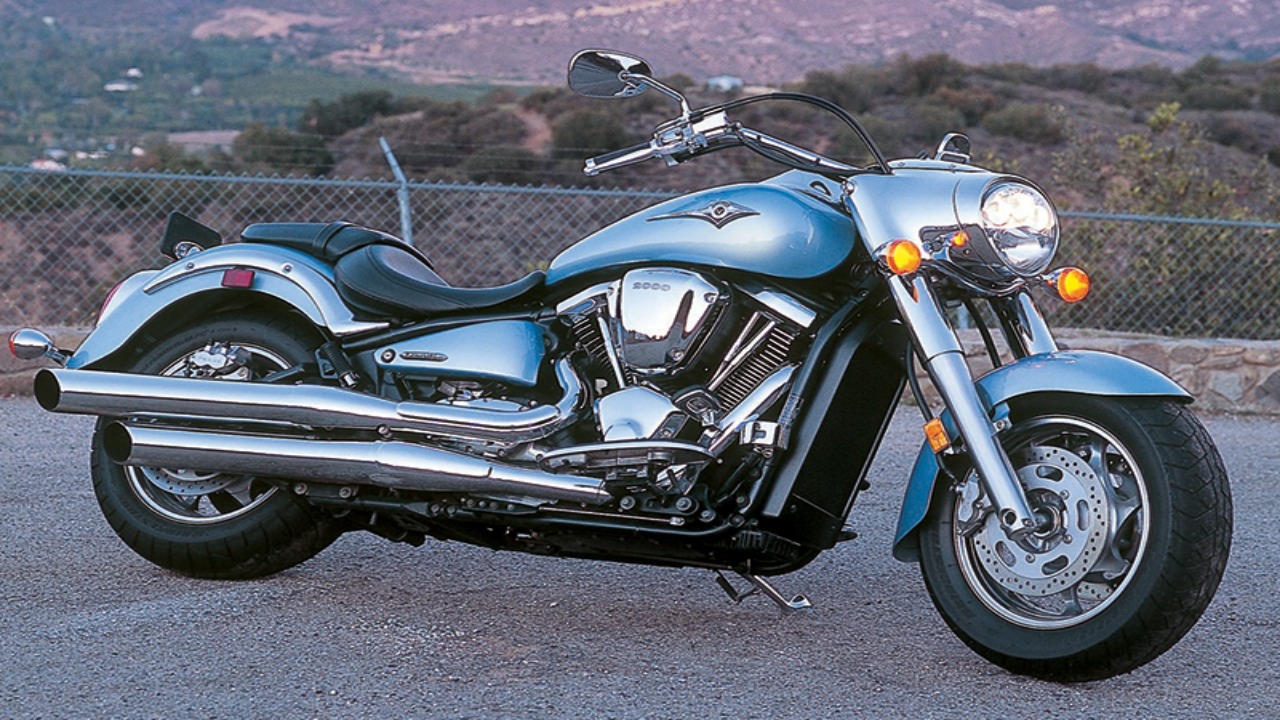Something about the Kawasaki Vulcan 2000 makes you want to get out and ride. It’s a big, powerful motorcycle that looks like it means business.
Likewise, the massive 2,053cc (125 ci) engine produces a whopping 140 horsepower to get this bike up to speed quickly. And when you’re ready to slow down, the Vulcan 2000 is equipped with powerful cruiser brakes that will bring you to a stop in no time.
Some Kawasaki Vulcan 2000 problems are repairable and replaceable. And some others are the consequences of flaws in the motorbike design. You can repair the shop and replace the faulty part or call the dealer to solve the problem. They know the reasons for, impacts on, and solutions to these problems.

List Of Kawasaki Vulcan 2000 Problems

Kawasaki Vulcan 2000’s problems included excessive heating, faulty batteries with reduced lifespan, and oil tank leakages. You will also see problems with its oil pump failure and neutral light. However, problems like excessive heat in the engine and oil pump failure will leave you with an unrideable Vulcan 2000. So, you must review the problems and find the solution from our guidelines.
|
Problem Name |
What Happens |
Possible Solution |
|
Excessive Heated Engine |
Reduced airflow and fuel consumption rate highly overheat the engine |
Intake manifold replacement |
|
Engine Stalling |
The engine fails when less air and fuel enter the combustion chamber. |
Valve replacement |
|
Failure of Ignition Switch |
Lights and other accessories stop working |
Pulling the spark plug wires off |
|
Faulty Battery |
Reduces performance |
Using a multimeter |
|
Oil Leakages |
Oil drips onto the ground out of the engine |
Clean or replace the air filter |
|
Failure of the Oil Pump |
Excessive oil pressure |
Replacement of the oil gear pump |
|
Neutral Light Intermittent |
Neutral light becomes intermittent and fails |
Check the kickstand safety switch |
Riders of this bike have complained about or reported these motorcycle problems. Besides, others gave or suggested solutions to the problem.
Problem 1: Excessive Heated Engine

Many reports are available where the main Vulcan 2000 issue is the engine overheating. Typically, it happens when airflow is reduced and fuel consumption is higher. Inspecting the problem, the riders have discovered several reasons for this problem.
Malfunctions with the thermostat, incorrect idle speed adjustment, and maintaining a flawed cooling system are the possible reasons for the engine temperature rise. The continuum of these factors may lead to a dead engine height.
Possible Solution
Experiencing an overheated engine can be frustrating and dangerous for drivers. To address this issue, check coolant levels and add if necessary. Ensure the radiator fan is functioning properly and repair or replace if needed. Clear any debris or blockages in the cooling system. Promptly addressing an overheated engine rebuild is crucial for safety. Consult a professional mechanic if these solutions do not resolve the issue.
Problem 2: Engine Stalling
The volume of air and fuel that flows to the engine’s combustion chamber is responsible for the stalling of the Vulcan 2000 engine. On the other hand, when the flow volume is less than what is generated during the combustion process, the rubber engine mounts cannot perform. Besides, insufficient oxygen cannot burn the gas properly for less volume of air and fuel flow. As a result, the bike engine stops unexpectedly.
Possible Solution
Solving this problem requires you to clean the valves and filters. These steps will help you fix it quickly.
- Check the valves by pulling down the handle of their covers. A jammed valve cannot let the handle move well.
- Next, check the valve is secure enough by pulling the handle.
- You may need to replace the valve if you hear any grinding sound when you throttle.
- Alternatively, you can clean the valve seat if there is no sound.
- After cleaning all the carbon buildup, reassemble everything and turn on the engine.
In most cases, carbon development inside the engine valve causes the problem. So, cleaning it should stop the engine stalling problem.
Problem 3: Failure Of Ignition Switch
The failure of an ignition switch can be a serious and potentially dangerous problem. When the ignition switch fails, it can prevent the vehicle from starting or cause it to stall while driving. This can leave drivers stranded or even result in accidents if the vehicle suddenly loses power.
In some cases, a faulty ignition switch can also cause other electrical components in the vehicle to malfunction, such as the headlights or windshield wipers. It is important to address any issues with the ignition switch promptly and have it repaired or replaced by a qualified mechanic to ensure the safety and reliability of your vehicle.
Possible Solution
First, you should pull the wires off the spark plugs. It will take merely a few seconds. Then, bring them out of the terminals and disconnect the negative end of the bike battery. Identify the correct wire for all the spark plugs and where they connect. Next, check which wire connection cannot prevent the spark plug from working. Connect them accordingly and place the battery in the right position.
Problem 4: Faulty Battery

Battery problems are another severe issue of Vulcan 2000. Two things are connected to this problem: voltage (the quantity of power) and capacity (the production of amps). If your motorcycle has a battery issue, these things will be irregular or lower than the standard time.
Again, the battery will lose some stored charges if you have not ridden the bike builder for a long time. It may reduce the battery efficiency, too. It happens more frequently in winter as the battery cells find it hard to work.
Possible Solution
It would be best to have a multimeter to justify the voltage level in the battery. To do so, connect the multimeter to the battery terminals. Then, check how many amps the meter draws when you turn on the engine. If this procedure is not working or you have already checked the level, you may consider replacing the battery. The Kawasaki Vulcan 2000 batteries are around $40 to $50. So, replacing the damaged battery won’t hurt your bank account either.
Problem 5: Oil Leakages
Oil leakage usually happens when it enters the air intake system. It makes its way to the bike’s bottom. Then, you see dripping marks on the ground where you keep or ride the bike. This problem may happen more if the lubricants contaminate and block the air filter. Hence, the blocking causes the engine to generate excessive heat.
Possible Solution
Oil leakages are a serious concern for individuals and businesses, posing environmental risks and incurring high costs for repairs and cleanup. Luckily, there are solutions available. Using oil-absorbent materials, like pads or pillows, effectively contain and absorb spilt oil with easy disposal.
Oil containment booms are another option, as floating barriers to prevent further spread. Regular maintenance and inspections are crucial in detecting and addressing issues before they escalate. Consulting with oil spill response professionals will help determine the best solution for each unique situation.
Problem 6: Failure Of The Oil Pump

Earlier models of Kawasaki Vulcan motorbikes (1987-2005) had a plastic oil pump gear. Models after those years had a metal replacement. These plastic pump gears caused the bike to stall all of a sudden. Usually, this problem appears when you ride the bike for around 4000-15000 miles.
If you want to buy an old Vulcan 2000, you should check the history of the pump to see if it is required. There can be a chance of the pump failing if there is a history. Typically, the problem is identical when you hear a whining noise from the clutch lever area or the continuum of the turned-on engine light. Even it can point to oil pressure irregularity.
Possible Solution
Experiencing an oil pump failure in your vehicle is a serious issue that needs immediate attention. The oil pump circulates oil, preventing wear and damage to the engine’s moving parts. When the pump fails, it can cause inadequate oil circulation, leading to engine overheating and potentially catastrophic failure. If you suspect an oil pump failure, have your vehicle inspected by a qualified mechanic promptly. Ignoring this problem may result in expensive repairs or a new engine.
Problem 7: Neutral Light Intermittent

Some Kawasaki Vulcan 2000 Classic riders have had a problem with the gear position switch. It tends to fail often, which is pretty rare in this bike. Consequently, the replacement did not work after riding 100 or fewer miles.
This problem prevents the bike from idling on the kickstand if the machine is interlocked in a neutral position. Some riders tried to start it when they found the kickstand was up and drew the clutch. Then, the bike started and ran well, but the whole scenario was not so satisfying. The factory service manual provides detailed instructions on diagnosing and fixing the intermittent neutral light issue, which various factors, including faulty wiring or a loose connection, can cause.
Possible Solution
The solution is also available from the discussion of riders. You may need to check the battery to see if there is any internal dead short. Also, inspect the wiring harness connection to see if it is loose or adequately tightened. Some other riders suggested checking or replacing the key or kickstand safety switch.
Problem 8: Noisey Drive Pulley
A noisy drive pulley can be a frustrating problem for vehicle owners. When the drive pulley becomes a noisy belt, it can indicate several issues that must be addressed. One common issue caused by a noisy belt drive pulley is worn-out single bearings. Over time, the bearings can become damaged or worn, leading to a noisy operation.
Another potential cause could be misalignment between the pulley and the belt, creating friction and noise. A loose or damaged belt can also contribute to a noisy drive pulley. It is important to address this issue promptly, as prolonged operation with a noisy drive pulley can lead to further damage and potentially costly repairs. If you are experiencing a noisy drive pulley, inspecting your vehicle by a qualified mechanic who can diagnose and resolve the problem efficiently is recommended.
Possible Solution
If you have a noisy drive pulley, there are a few solutions you can try. First, check the belt tension of the drive belt and adjust it if necessary. Lubricating the pulley with silicone-based spray or grease can also help reduce noise. Consider replacing the pulley if you notice any damage or wear. If you’re unsure how to address the issue, consult a professional mechanic for expert guidance and proper repair.
Conclusion
Owning a Kawasaki Vulcan 2000 can be a thrilling experience, but like any Motorcycle Technology, it may come with its fair share of problems. From issues with the fuel system to electrical malfunctions and transmission troubles, there are several common problems that riders have encountered with this model.
However, it’s important to note that not all Vulcan 2000 owners will experience these problems, and many can be resolved with proper maintenance and regular servicing. If you’re considering purchasing a Kawasaki Vulcan 2000 Problems or already own one, it’s always helpful to be aware of potential issues so that you can address them promptly. By staying proactive and taking care of your bike, you can enjoy the power and performance of the Vulcan 2000 for years to come.
FAQ’s
What Is The Top Speed Of The Kawasaki Vulcan Vn2000?
The top speed of the Kawasaki Vulcan VN2000 is an impressive 125 mph. With its powerful engine and sleek design, this motorcycle is built for speed and performance.
Is A 2000 Kawasaki Vulcan Fuel Injected?
The 2000 Kawasaki Vulcan does not come equipped with fuel injection. Instead, it features a carbureted engine system. Carburettors are responsible for mixing air and fuel in the correct proportions before delivering it to the engine cylinders.
How Much Horsepower Does A 2000cc Vulcan Have?
The 2000cc Vulcan engine typically has a horsepower range between 100-150, depending on the specific model and any modifications that may have been done.
Are Kawasaki Vulcan Fuel Injected?
Yes, Kawasaki Vulcan motorcycles are fuel injected. Fuel injection is a modern technology that replaces traditional carburettors by directly injecting fuel into the engine’s combustion chamber.
Is The Kawasaki Vulcan Good For Beginners?
Yes, the Kawasaki Vulcan can be a good option for beginners. Its comfortable riding position, manageable power, and user-friendly features provide a great platform for new riders to learn and build their skills.

I must take you to task regarding your inability to form a cogent sentence.
Under Overheating & Possible Solution You state the following:
Disconnect the battery to keep starting motor safe. (check)
Then, clean all the dirt and debris from the intake manifold (check)
and check the radiator fan. (check check)
Now, turn off the ignition and take a half-minute break. (turn off ignition? Okay but why? You already said disconnect the battery.)
(After I turn off the ignition you want me to wait 30 seconds? Fine.)
When you get the engine running after restarting, (How else am I going to get it running without restarting. Is there another choice?)
I suggest you replace the intake manifold.
(WHAT!!! Did you not just tell me to clean the intake manifold? WHY if in the next step I’m suppose to throw the manifold in the trash?
Problem – 2: Engine Stalling
The volume of air and fuel that flows to the engine’s combustion chamber is responsible for the stalling of the Vulcan 2000 engine. On the other hand, when the flow volume is less than what is generated during the combustion process, the engine cannot perform.
Re-read those 2 sentences. The first sentence clearly states the issue: Insufficient airflow. The 2nd sentence begins “On the other hand” and then proceeds to say the exact same thing as the first sentence but with garbled sentence structure.
Besides, insufficient oxygen cannot burn the gas properly for that less volume of air and fuel flow. As a result, the bike engine stops unexpectedly.
(ARGH this drives me nuts. This sentence repeats the same idea now for the third time.
BUT BEGINS WITH “Besides”
Do you see how many words you use to say nothing?
It’s as if you’re trying to convey:
2 + 2 = 4,
On the other hand
2 + 2 = 4,
And besides that
2 + 2 = 4
Possible Solution
Solving this problem requires you cleaning the valves and filters. These steps will help you fix it quickly. ( Do people typically tear a whole motor down and remove the valves.
All for the purpose of cleaning?
Check the valves by pulling down the handle of their covers. A jammed valve cannot let the handle move well.
(Here the reader obviously has walked in right in the middle of a conversation the author is sharing. I wish we would have heard the beginning of this conversation. It might have been helpful. Handle above the valve? Is he talking about a toilet? What is the correct term for this teapot handle?
Next, check the valve is secure enough by pulling the handle.
If you hear any grinding sound when you throttle, you may need to replace the valve.
Alternatively, you can clean the valve seat if there is no sound.
After cleaning all the carbon buildup, reassemble everything and turn on the engine.